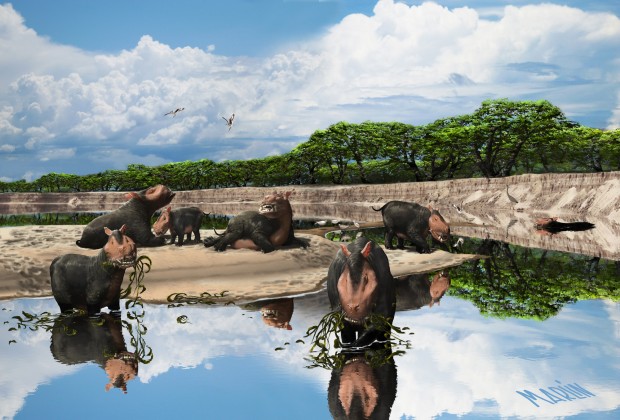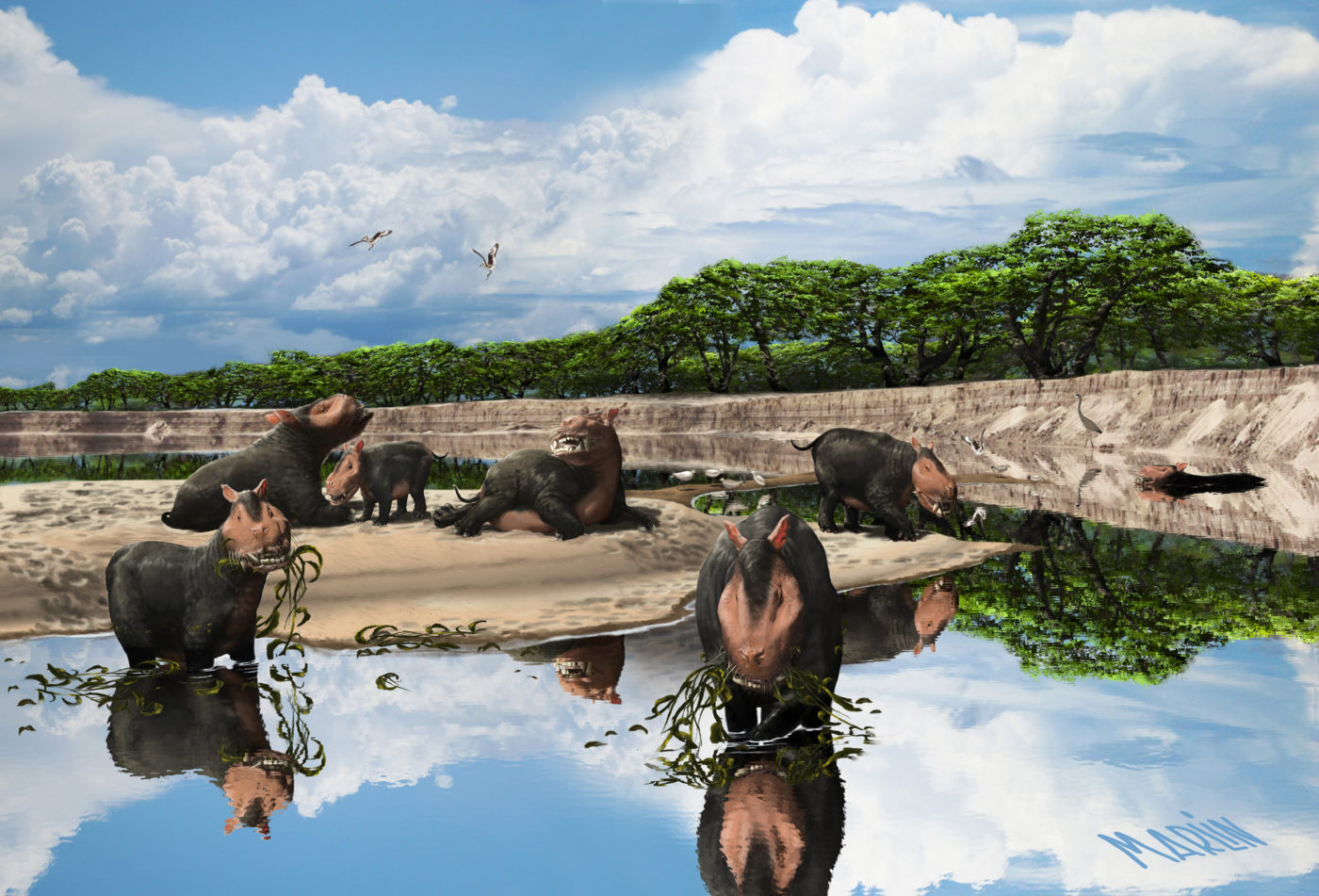Misbehaving Photoshop filters couldn’t stop me finishing! I finally finished it, and I am happy how it came out. It is large, made to be printed out at least 48 inches across, but the detail could hold up a lot larger…I have to print one myself to see how it looks on a format other than a computer screen. Otherwise if you want to see it in action, go to Western Washington University’s Environmental Studies building.
I shot screenshot timelapse video of the whole creation, including the modeling of the clay so hopefully I can get that video together soon. Until then, let me know what you think. Depicted are the creators of trackways found at the Racehorse Creek landslide that inhabited the low lying tropical estuary ~50 million years ago. There are prehistoric analogues of modern Herons, and Willets, and of course the group of Coryphodons- today we have nothing similar or even distantly related. They were fascinating creatures that had perhaps the smallest known brain to body ratio of any mammal. Do you think I created them in a believable rendering? As the artist, I chose all of the non-skeletal features such as hair, color, ears, snout shape, habitus, etc. Large responsibilities for someone who never saw them in real life!
Here are a couple wikipedia links of Coryphodons and the Eocene.
509-881-8652
marlinpeterson@gmail.com


Beautiful! I just spent all of July collecting these guys in a Wyoming field camp…
Clayton!
I just got back into town, sorry it took me a while to respond.
thanks for the note! Coryphodons are awesome.
I wonder how you imagined them compared to how I depicted them? Obviously going from fossils to fleshed out muscles and hair, an artist takes great (educated) liberties.
Did you imagine them differently in any way? What other kinds of animals were you finding amongst the Corys? Where in Wyoming were you?
Sweet to meet a scientist on the front lines…I wish these amazing early mammals got more visibility.
Cheers,
Mar